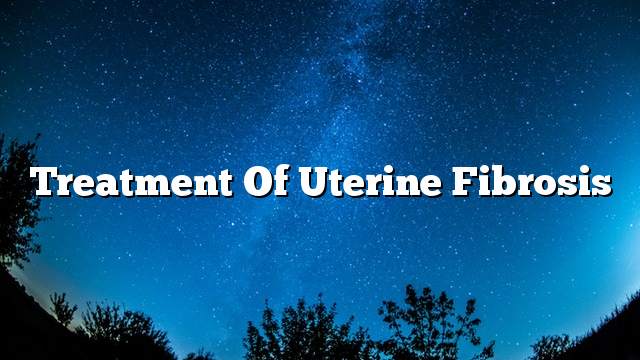Fibrosis
Uterine fibroids (Uterine fibroids) can be defined as benign tumors in the uterus (Benign tumor in Womb). The cause of this type of tumor is not yet fully known and is often diagnosed by pelvic examination. It is important to note that this type of benign tumor does not increase the chance of developing uterine cancer, and that it often remains benign and does not become cancer. The size of fibrosis from a small to a naked eye to a large causes the enlargement of the uterus and increase its size, and may extend to reach the chest.
Symptoms of cirrhosis
The symptoms of cirrhosis do not appear on all women who are infected, but if they appear, they depend on the size, number, location of the fibrosis present. The most common symptoms observed on some women with uterine fibrosis are:
- Heavy menstrual bleeding.
- Continue your menstrual cycle for more than a week.
- Constipation.
- Frequent urination.
- Feeling pain and pressure in the pelvic area.
- Difficulty emptying the bladder.
- Pain in the back or legs.
- Pressure in the rectal area and difficulty in output.
- Anemia is the result of menstrual cramping.
Treatment of uterine fibrosis
There are a lot of procedures that can be used to treat fibrosis, and often treat cirrhosis if caused by the emergence of symptoms, and the doctor determines the best way to treatment depending on the condition of the patient and health, and the remedial procedures used in the treatment of cirrhosis of the following:
- Watchful waiting: In cases where there are no symptoms or signs on the infected, it is used for this type of treatment, and the principle of this treatment to monitor the patient and follow-up, as well as the use of control in the cases of symptoms and signs simple, which do not cause much inconvenience. This type of treatment has been suggested because cirrhosis does not grow over time or grows very poorly, and it does not usually affect the female pregnancy, it also decreases and decomposes when the hormone is reduced in the body when women reach menopause. .
- Medication: The drugs used in the treatment of cirrhosis of the uterus can not get rid of fibrosis, but it is able to reduce the size, in addition to its role in the relief of some symptoms such as pressure on the pelvis, and the abundance of menstrual cycle, because of these drugs influence the level of hormones that control the cycle Monthly, and these medicines include:
- Gonadotropin-releasing hormone agonists: The use of this type of treatment is aimed at stopping the secretion of estrogen hormones and progesterone, thus stopping the menstrual cycle and reducing the size of fibrosis and improving anemia (English: Anemia), but It should be noted that these drugs are not used for more than 3-6 months; because long-term use causes bone loss, in addition to the symptoms of cirrhosis again after the cessation of these drugs, it is worth mentioning that doctors may resort to the use of these drugs to reduce the size of cirrhosis Pre-traction Oasis.
- Nonsteroidal anti-inflammatory drug (NSAID): These are given to relieve the pain associated with menstrual cycle in addition to reducing the abundance of menstruation.
- Birth control hormones: Although these hormones do not affect the size of existing fibrosis, they are in many forms able to alleviate the pain of the menstrual cycle and reduce the proliferation, in addition to its role in preventing pregnancy.
- Intrauterine Device (IUD): Often the progesterone is the hormone in the uterus, which reduces the abundance of the menstrual cycle and the pain caused by the fibrosis, and it should be noted that the impact of the coil in the size of fibrosis It is worth mentioning that this coil Contraception works.
- Progestin Shots: These injections are given once every three months, and pregnancy is prevented. However, the condition of fibrosis may improve in some women and may stimulate growth in others. But doctors often prescribe these injections to ease the amount of blood lost in the menstrual cycle.
- Iron supplements: Iron supplements must be taken to treat anemia caused by cirrhosis. These supplements are sold over-the-counter.
- Tranexamic acid: This is given in the days when the menstrual cycle is very dense, and is not considered a hormonal treatments.
- Surgery (Surgery): Surgery includes three types of surgery as follows:
- Non-invasive surgery: The principle of this surgery is the use of ultrasound and magnetic resonance imaging (magnetic resonance imaging), including in the outpatient clinics without injuring or opening.
- Simple surgical surgery: This surgery aims to destroy the fibrosis without removing it, including Uterine artery embolization, endometrial ablation, and others.
Learn more about uterine fibers and their symptoms.
